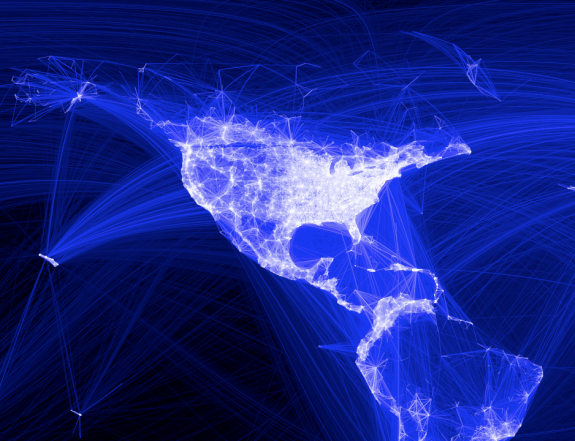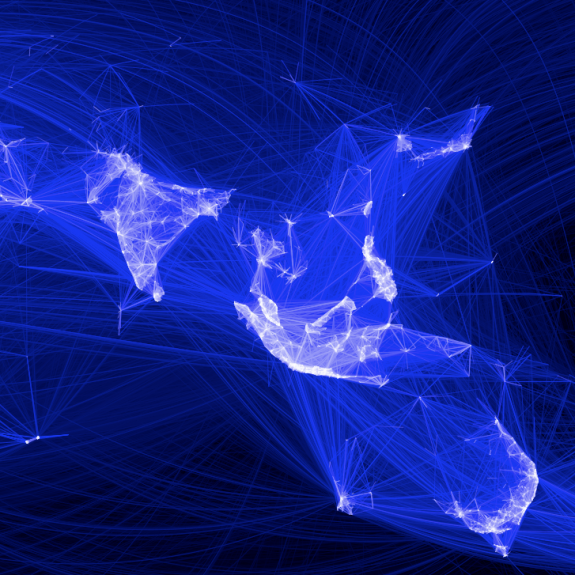
For 27-year-old Dong Ying, Beijing is a city of dreams. Two years ago, the sports teacher relocated from a small city in the north-eastern province of Heilongjiang to the Chinese metropolis. Here, she hoped, her wishes for a more interesting life would be fulfilled.
Since then she goes from fitness club to fitness club every day, working as a trainer. She pedals, she bends and straightens and basically ensures that the affluent city residents stay in shape. To reach her students, she spends four hours each day travelling on the city's subway.
She earns around 3,000 yuan (around €350 or $450) per month, a sum she would never have earned doing similar work in her hometown. And here she can enjoy the big city. "I am happy," says the young woman, who is wearing a pink Nike sports shirt. "I love my work, and I feel free."
Going Underground
But there is a severe flaw in her Beijing lifestyle. Dong Ying lives, literally, underground. The only accommodation she can afford is a tiny room in the cellar of an apartment building. Every month she pays the equivalent of €52 ($68) for the room, around 15 percent of her income. Other tenants must live even further down, on the cellar's second level, where the rent is even cheaper.
A bed, a small cupboard and a desk just fit into Dong Ying's barren room. A communal toilet and bathroom are at the end of the hallway. Anyone living here must eat out every day because any kind of kitchen is prohibited for safety reasons. Still, Dong Ying can find something positive to say about her home: "The house management is OK. The corridor is clean."
Dong Ying is one of hundreds of thousands of Chinese sentenced to a life underground -- migrant workers, job seekers, street vendors. All those who can't afford life above ground in Beijing are forced to look below.
Dong Ying's room is one of around a hundred similar dwellings under a modern apartment block on the outskirts of the Beijing district of Chaoyang. While the wealthier residents enter the building, then go right or left to an elevator, the underground dwellers head past a cellar for bicycle storage, and then downstairs. There's no emergency exit.
Running Out of Options
Generally it's not the people living in the apartments above who rent out their cellar spaces: It tends to be apartment managers who put the unused spaces to work. In doing so, they tread close to breaking rental laws. Some even rent out official air-raid shelters -- which is actually totally prohibited.
The demand for underground accommodation may even rise in the near future. The Beijing city administration recently gave permission to level dozens of outlying villages in order to make room for new living and business areas.
Thousands of migrant workers live in those villages, often in primitive conditions. The citizens of Beijing call them the "ant people" because of the way they live on top of one another. Demolishing the villages will leave them with few options. They will either find accommodation farther outside the city, or, if they want to live close to their workplaces, they will have to go underground.
Beijing's officials pride themselves on the fact that the city has no slums like those in, say, Nairobi or Bangkok. The areas of brick hovels without so much as a toilet, which used to shape the cityscape in many districts, have begun to vanish. What the city fathers don't admit, though, is a still-unresolved problem -- that many millions cannot afford a normal apartment in Beijing. The city's housing market in some ways symbolizes the new communist China -- a society in which the gap between rich and poor continues to widen.
On average, apartments in Beijing rent for the equivalent of €350 per month, about as much as Dong Ying earns. And prices are rising. At the start of the year, tenants paid around €314. A year earlier, it was €266.
Speculating on Real Estate
One reason for the high prices is that demand outstrips supply. There are relatively few apartments available for rent in Beijing. Over two-thirds are privately owned, of which a large share were in the past sold cheaply by authorities or factories to their employees.
Social housing, moveover, has only begun to develop. Last year 8,000 rental properties were built for those on minimal incomes, and this year there should be 10,000 -- a mere drop in the ocean for Beijing.
Even those with enough money to buy their own homes are not necessarily fortunate. New housing developments keep springing up, and the amount of new property available is growing, but prices have also shot sky-high in the past few months. Buyers are currently paying €2,546 per square meter on average.
For rich Chinese, like the wealthy coal barons from the Shanxi province, Beijing apartments are investments worthy of speculation, like stock market shares or gold. These speculators don't think about renting the apartments out. They simply aim for properties with rising prices, so they can sell them on and turn a profit.
Recently experts have talked about a real estate bubble which threatens to burst. As discontentment grows among those citizens who earn good money but still can't afford their own apartments, the Chinese government wants to curb speculation with new taxes and rules.
'We Can All Live Together as a Family'
Wang Xueping, 30, is light-years away from owning her own apartment. At the moment she's trying to push her baby carriage out of the basement of Building 9 in the Jiqing Li residential complex in central Beijing. Two months ago, she and the child moved from Jilin province in northeastern China to join her husband, who's been driving cabs in Beijing for three years.
Now all three of them live in a cellar room that is 10 square meters (108 square feet) in size. "The main thing is that we can all live together, as a family," Wang Xueping says.
Meanwhile, fitness trainer Dong Ying has had good luck. She's moved cellars, into a room with a small shaft that allows a little daylight in. And she has a new boyfriend, who has just bought himself a new apartment. If they get married, Dong Ying's days underground will end.



